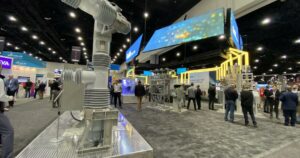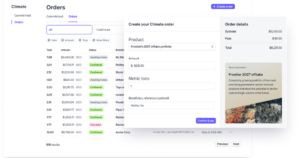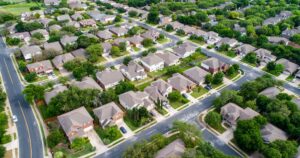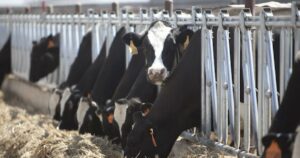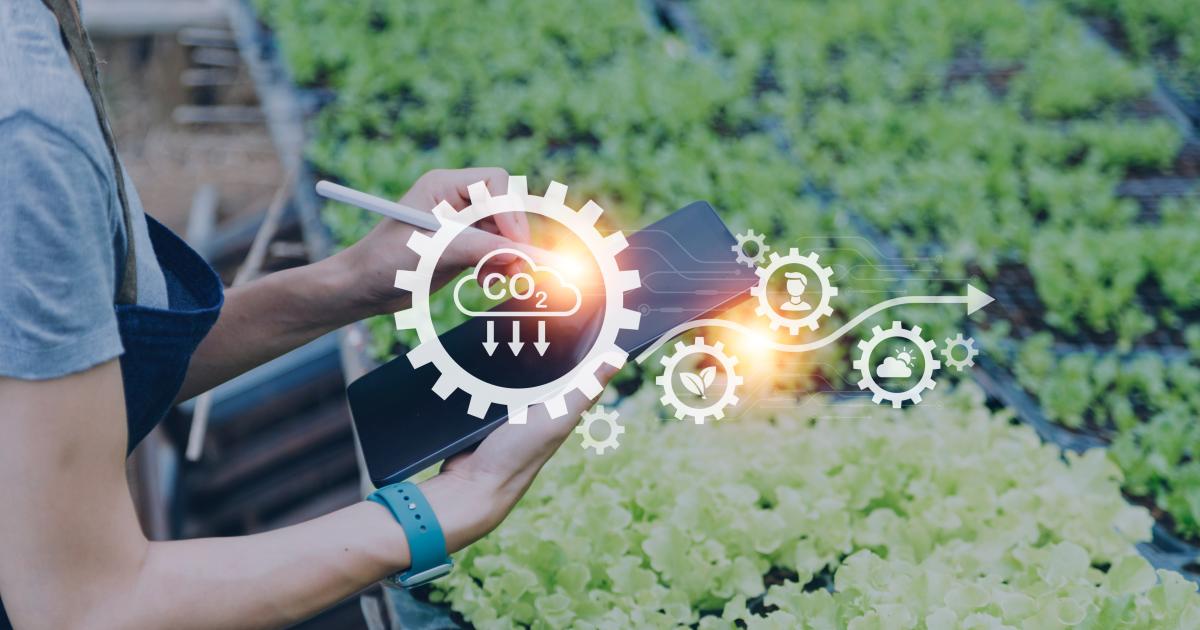
This article is sponosred by Booz Allen Hamilton.
The impacts of climate change — an increasing number of more intense hurricanes, droughts, heatwaves and so on — traverse freely across geographic, social and political hierarchies. To create resilient communities, climate action needs to transcend the limits of current thinking, where the solutions get to the heart of the core issues and human experiences.
Communities and organizations alike are increasingly accepting that the climate is changing. Climate change is causing an increase in extreme weather events at the macro-scale, and it will incrementally affect key climate measures, such as temperature and precipitation, which affect the quality of life, the resilience of built infrastructure and our multi-sector economies. Ultimately, these impacts are felt by people and are often disproportionately distributed across communities and socioeconomic boundaries.
For many, this is triggering an “all hands-on deck” mentality, and there has been an influx in action. At the state and local levels, organizations are establishing new leadership roles, such as the chief resilience officer, to increase their focus on resilience planning and implementation. These groups are developing their own formalized resilience plans and playbooks, while alliances to address these challenges are forming across diverse groups at local, national and global levels.
To effectively anticipate future challenges, mitigate risk and improve resilience, these groups will have to solve nontrivial coordination and collaboration problems. Across the world, groups are often left asking: Who else is facing similar challenges? What are others doing to solve these problems? Climate change is a daunting multi-generational problem — one that can only be alleviated when we achieve true economies of scale and get to the heart of our needs for improved resilience, sustainability and justice.
These broad questions lead to more precise questions for the resilience leaders to address the root causes: What other localities around the globe have similar geographic, cultural, economic and resource characteristics? What partnerships and procurements optimize my resilience plan, particularly considering my budgetary and locality constraints? What did we learn from the last set of extreme weather events and disaster responses? While we can answer some of these questions with traditional climate datasets powered by ground systems, advanced sensors and models, we still need to understand people’s narratives. The language of climate resilience is more comprehensive than we think.
To extract actionable insights from our stories, past experiences and individual plans, we must contextualize them against the backdrop of others. This is where advanced technologies such as artificial intelligence (AI) and machine learning (ML) can help.
Large language models, headlined by the now infamous ChatGPT, have garnered significant attention. These are deep learning algorithms and machine learning algorithms that use deep neural networks, trained on unstructured data. These models can then be used for a wide range of tasks, including content summarization, translation and prediction.
These and other models within the field of natural language processing (NLP) have massive implications for climate resilience. As each new climate challenge is identified, communities generate new plans, solutions and conversations. As extreme events unfold, people share their statuses and requests and collaborate via social media. These artifacts are often captured as text documents, unstructured data ripe for analysis. Herein, language models can learn themes, characteristics and language codified in these datasets, compiling insights from the communities that create them. As a community confronts a new resilience challenge, these capabilities can help them discover other artifacts that describe similar challenges faced by their peers, enabling them to learn from past events and develop custom strategies. With additional context and opportunities for collaboration, communities can develop an optimized plan that can enhance post-disaster actions and harden their defenses against future challenges.
Resilience leaders can augment qualitative plans with insights from sensor or simulation data, which can add greater fidelity and context to expected climate futures and tradeoffs in their plans. While precise estimates of climate futures are very challenging, resilience planners can use a wide range of diverse climate models, each based on a unique set of assumptions, to forecast possible climate futures. While these tools, data, and models can motivate and structure action, quantifying future scenarios is rarely sufficient. True power and consequential outcomes require connecting diverse human experiences and implementing resilience actions that address foundational issues.
Within Booz Allen Hamilton, we have had success building similar capabilities with our partners. Our GAMECHANGER solution helps the Department of Defense (DoD) search and uncover critical policy documents, within massive troves of context-rich text, that discuss the policies of interest and highlight groups tackling similar problems, providing a foundation for future action. Building on the community mindset, the DoD and Booz Allen have open-sourced this software so that others can reuse the approach and models.
Within the climate domain, we have worked with customers to develop NLP models and applications that help organizations address resilience challenges with critical mission partners. Organizations can upload climate resilience requirements into these tools, receiving a report on optimal partnerships they can leverage to achieve their climate resilience objectives.
There are no superheroes when working to improve our climate resilience — this must be done together, tapping into vast unstructured datasets and the insights that they offer. If we can use AI/ML solutions to break down barriers, we can begin to learn from the histories of societies and the experiences of similar, committed groups. Through collaboration, exponential and timely progress can be made, progress that gets at the heart of the issue and not surface-level symptoms. This can shift the narrative, slowly and surely, from “addressing the impacts of a changing climate” to working together to build the future with the health, wealth and harmony that we all deserve.
- SEO Powered Content & PR Distribution. Get Amplified Today.
- Platoblockchain. Web3 Metaverse Intelligence. Knowledge Amplified. Access Here.
- Source: https://www.greenbiz.com/article/language-climate-resilience-value-chain-inclusive-human-experiences
- :is
- a
- Achieve
- across
- Action
- actions
- Additional
- address
- addressing
- advanced
- affect
- against
- AI
- AI/ML
- algorithms
- All
- analysis
- and
- answer
- anticipate
- applications
- approach
- ARE
- around
- article
- artificial
- artificial intelligence
- Artificial intelligence (AI)
- AS
- At
- attention
- backdrop
- barriers
- based
- BE
- begin
- boundaries
- Break
- broad
- build
- Building
- built
- by
- CAN
- capabilities
- causes
- causing
- chain
- challenge
- challenges
- challenging
- change
- changing
- characteristics
- ChatGPT
- chief
- Climate
- climate action
- Climate change
- codified
- collaborate
- collaboration
- committed
- Communities
- community
- comprehensive
- Connecting
- considering
- constraints
- content
- context
- contextualize
- conversations
- coordination
- Core
- create
- critical
- cultural
- Current
- custom
- Customers
- data
- datasets
- deep
- deep learning
- deep neural networks
- Defense
- Department
- department of defense
- describe
- deserve
- develop
- developing
- DID
- disaster
- discover
- discuss
- distributed
- diverse
- documents
- DoD
- doing
- domain
- down
- each
- Economic
- economies
- Economies of Scale
- effectively
- enabling
- establishing
- estimates
- events
- expected
- Experiences
- exponential
- extract
- extreme
- faced
- facing
- fidelity
- field
- Focus
- For
- Forecast
- Foundation
- from
- future
- Futures
- generate
- geographic
- get
- Global
- globe
- greater
- Ground
- Group’s
- Hamilton
- hands-on
- Harmony
- Have
- Health
- Heart
- help
- helps
- Highlight
- HTML
- HTTPS
- human
- identified
- Impacts
- implementation
- implementing
- implications
- improve
- improved
- in
- Including
- Inclusive
- Increase
- increasing
- increasingly
- individual
- infamous
- influx
- Infrastructure
- insights
- Intelligence
- interest
- issue
- issues
- IT
- Justice
- Key
- language
- Last
- lead
- leaders
- Leadership
- LEARN
- learning
- levels
- Leverage
- Life
- limits
- local
- machine
- machine learning
- made
- many
- massive
- measures
- Media
- Mindset
- Mission
- Mitigate
- ML
- models
- more
- multi-sector
- NARRATIVE
- narratives
- National
- Natural
- Natural Language
- Natural Language Processing
- Need
- needs
- networks
- Neural
- neural networks
- New
- nlp
- number
- objectives
- of
- offer
- Officer
- on
- ONE
- opportunities
- optimal
- Optimize
- optimized
- organizations
- Other
- Others
- own
- particularly
- partners
- partnerships
- past
- People
- people’s
- plan
- planning
- plans
- plato
- Plato Data Intelligence
- PlatoData
- policies
- policy
- political
- possible
- power
- powered
- precise
- prediction
- Problem
- problems
- processing
- Progress
- providing
- qualitative
- quality
- Questions
- range
- receiving
- report
- requests
- require
- Requirements
- resilience
- resilient
- resource
- Risk
- roles
- root
- Scale
- scenarios
- Search
- sensors
- set
- Share
- shift
- significant
- similar
- simulation
- Slowly
- So
- Social
- social media
- socioeconomic
- solution
- Solutions
- SOLVE
- some
- State
- Still
- Stories
- strategies
- structure
- success
- such
- sufficient
- superheroes
- surely
- Sustainability
- Symptoms
- Systems
- tasks
- Technologies
- that
- The
- The Future
- The State
- the world
- their
- Them
- These
- Thinking
- Through
- to
- together
- tools
- traditional
- trained
- Translation
- triggering
- true
- Ultimately
- uncover
- understand
- unique
- use
- value
- Vast
- via
- Wealth
- Weather
- What
- which
- while
- WHO
- wide
- Wide range
- will
- with
- within
- worked
- working
- world
- zephyrnet



